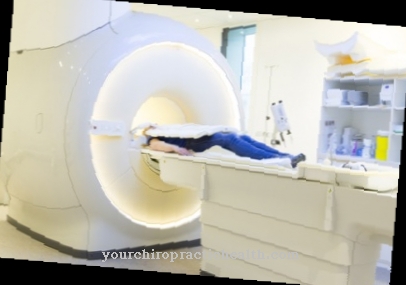A Root canal treatment is considered a complicated and, depending on the clinical picture, also a time-consuming procedure. The reason for a root canal treatment is an inflammation of the tooth pulp. After a successful root canal treatment, the diseased tooth can be saved.
What is a root canal treatment?

At a Root canal treatment the dentist removes inflamed tissue inside the tooth through a canal. Then he cleans the inside of the tooth, removes the diseased tissue and finally seals the tooth root with a tight filling so that no bacteria can penetrate into the interior.
The medical term for root canal treatment is Root canal treatment or endodontic treatment. In many cases, caries bacteria are responsible for inflammation of the tooth pulp (pulpitis), which consists of blood vessels and nerves.
These can trigger the inflammation in an advanced infestation. Reasons for a root canal treatment also include a tooth fracture, in which parts of the tooth have broken off or chipped, and a treatment trauma such as after grinding a tooth crown. Root canal treatment is the only way to preserve the tooth.
Function, effect & goals
Before the real Root canal treatment the dentist uses local anesthesia to ensure that the patient does not feel any pain during the root canal treatment. If the nerve has not yet died, the pain can prevent successful root canal treatment. A rubber blanket protects the tooth from the penetration of bacteria and ensures that the patient does not swallow any rinsing liquid or any of the small instruments used in root canal treatment.
In order to gain access to the pulp, the dentist has to drill open the diseased tooth. Since the root canals cannot be seen with the naked eye, the dentist uses magnifying glasses or a microscope and then feels the entrances to the root canals with fine instruments. In order to precisely determine the length of the root canals, the dentist inserts files into the canals. The length of the canals can be read from special x-rays of the files together with the tooth.
Then the dentist can clean even curved canals with great sensitivity and flexible instruments and possibly remove the dead nerve. An additional rinse kills all bacteria present in the root canal. Since a tooth can have up to four canals, the root canal treatment sometimes has to be spread over several appointments.
At the end of the root canal treatment, the dentist dries the root canal and fills it with an elastic biomaterial which, when heated, spreads throughout the canal system. Further x-rays check the success of the treatment and show whether the filling is sufficient or a crown is necessary.
The primary goal of a root canal treatment is the complete removal of all germs and bacteria as well as the cleaning of inflamed tissue residues from the root canals. In addition, tight closure of the canals should ensure that no further germs can attack the tooth pulp. A successful root canal treatment prevents inflammation of the root tip, which can even penetrate into the jawbone.
You can find your medication here
➔ Toothache medicationRisks & dangers
Despite its good chances of success of up to 90%, the Root canal treatment ' a complicated treatment method that carries some risks. The fine instruments can break during the root canal treatment, injure the side of the root canal or the nerve. If the inflammation does not go away or if it recurs several weeks after the root canal treatment, either the tip of the tooth must be cut off or the tooth must be removed completely.
Complications with a root canal treatment occur particularly when a tooth that has already received a root filling is treated. The risk of the instruments damaging the root canal is greater than with an as yet untreated tooth.
After the root canal treatment, swellings can form around the treated tooth, but this should subside after about a week. The same applies to the pain: if it becomes unbearable or does not go away after a few days, the patient should see their dentist.He can decide what causes the pain from the root canal treatment and point out appropriate treatment options.



























